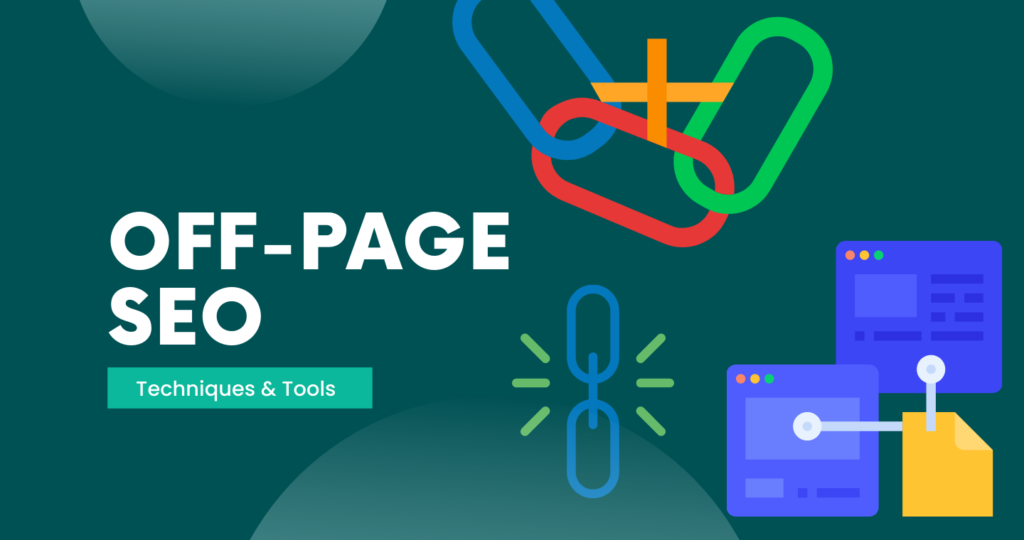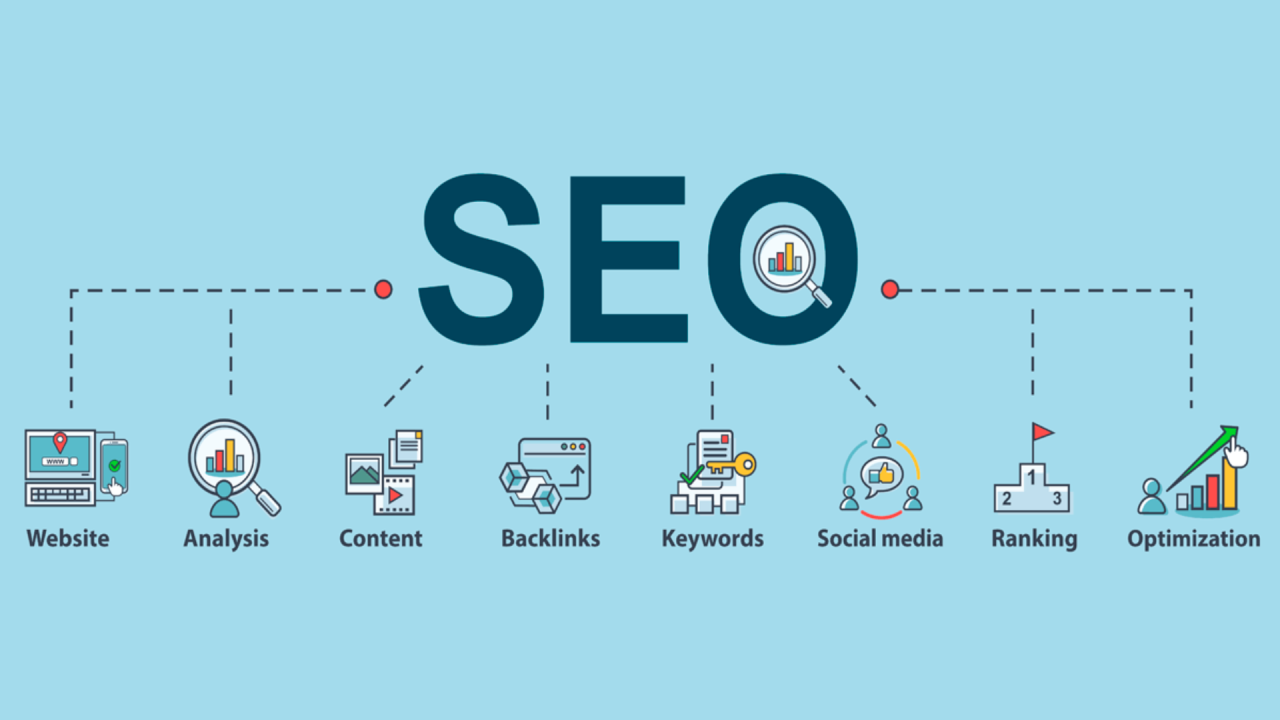
In today’s digital age, businesses and individuals alike need to focus on improving their online presence. Search Engine Optimization (SEO) is one of the most effective ways to drive traffic and increase online visibility. This detailed guide will cover every aspect of SEO, offering valuable insights on how to rank higher on search engines and attract more visitors.
1. What is SEO?
Search engine optimization is the process of optimizing a website to rank higher in search engine results. This includes using specific strategies to increase the visibility of your content, attract organic traffic, and improve your website’s reputation. SEO is essential for anyone who wants to be successful online, whether you’re running a blog, an e-commerce site, or a corporate website.
2. How Search Engines Work:
Before diving into search engine optimization strategies, it’s important to understand how search engines work. Search engines like Google use complex algorithms to analyze, rank and display content. They crawl websites, index pages, and rank them based on relevance, quality, and user engagement. Your goal with SEO is to ensure that search engines rank your website as highly as possible for your targeted keywords.
3. Key Components of SEO:
SEO consists of several key components that work together to increase your website’s ranking:
3.1 On-Page SEO:
On-page SEO involves optimizing the individual pages of your website. This includes using keywords, meta descriptions, title tags and headers in a way that improves search engine rankings. It is important to write high-quality, informative content that is valuable to consumers while also being optimized for search engines.
3.2 Off-Page SEO:
Off-page SEO refers to actions taken outside of your website that affect your rankings. This includes building backlinks, social media engagement, and guest posting. Backlinks from high-authority websites signal to search engines that your content is trustworthy and valuable.
3.3 Technical SEO:
Technical SEO focuses on the back end aspects of your website. This includes improving your website speed, ensuring mobile friendliness, and optimizing your site structure for search engine crawlers. Tools like Google PageSpeed Insights help you monitor and improve technical performance.
3.4 Content SEO:
Content is the foundation of Search Engine Optimization. Creating high-quality, engaging content is essential to ranking. Use a mix of long-tail keywords and short-tail keywords in all your articles, and aim to create informative, original and well-researched content that meets your audience’s needs.

4. How to Perform Keyword Research:
Keyword research is the cornerstone of any SEO strategy. To increase your online visibility, you need to identify the keywords that your target audience is searching for. Here’s how you can perform effective keyword research:
4.1 Use SEO Tools:
There are many tools available for keyword research, such as Google Keyword Planner, SEMrush, and Ahrefs. These tools can help you find keywords that are relevant to your niche, along with search volume and competition data.
4.2 Focus on Long-Tail Keywords:
Long-tail keywords are specific and less competitive than broad, general keywords. They often have low search volume but high conversion rates because they target customers who are searching for exactly what you have to offer.
4.3 Analyze Competitor Keywords:
Researching the keywords your competitors are ranking for can give you valuable insight into what works. Use tools like Moz or Ubersuggest to analyze the keyword strategies of top-performing competitors in your niche.
5. On-Page SEO Best Practices:
Optimizing your on-page elements is essential to improving your SEO ranking. Follow these best practices for effective on-page SEO:
5.1 Title Tags and Meta Descriptions:
The title tag is the clickable title of your search results. Make sure it’s concise, keyword-rich, and descriptive. Meta descriptions should summarize the content of the page to attract clicks.
5.2 Headers and Subheadings:
Use headers (H1, H2, H3) to organize your content. This not only improves readability but also helps search engines understand the structure of your content. Include your focus keyword in at least one header.
5.3 URL Optimization:
URLs should be short, descriptive, and include your desired keywords. Avoid using special characters or numbers that are not relevant to the content of the page.
5.4 Internal Linking:
Linking to other pages on your website helps search engines understand your site’s structure. It also keeps visitors engaged, increasing their time on site, which can boost rankings.

6. Off-Page SEO Strategies:
Building your website’s reputation with off-page Search Engine Optimization is just as important as on-page efforts. Focus on the following strategies:
6.1 Building Backlinks:
Backlinks are links from other websites to your own website. The more high-quality backlinks you have, the better your site will rank. Reach out to websites in your niche for guest posting opportunities, or create content that naturally attracts links.
6.2 Social Media Engagement:
Engaging on social media can increase traffic to your website and increase brand awareness. Share your content on platforms like Facebook, Twitter, and LinkedIn to broaden your reach and encourage sharing.
6.3 Influencer Outreach:
Partnering with influencers in your niche can significantly increase your website’s visibility. Influencers are huge, and their mentions can drive valuable traffic to your site.
7. Technical SEO Tips:
Technical SEO is important to ensure that search engines can effectively crawl and index your website. Here’s how you can improve the technical aspects of your site:
7.1 Mobile-Friendliness:
With most searches happening on mobile devices, having a mobile-friendly site is essential. Use responsive design to ensure your site looks great on all devices.
7.2 Page Speed Optimization:
A fast-loading website improves user experience and helps with rankings. Tools like GTmetrix and Google PageSpeed Insights can help you identify and fix performance issues.
7.3 Secure Your Site with HTTPS:
Google prefers secure websites, so make sure your site has an SSL certificate, which makes it accessible via HTTPS. It also builds trust with visitors, encouraging them to stay on your site longer.

8. Measuring SEO Success:
Tracking the effectiveness of your SEO efforts is important. Some important metrics to monitor are:
8.1 Organic Traffic:
Using Google Analytics to find out how many visitors find your website through a search engine. An increase in organic traffic is a key indicator of Search Engine Optimization success.
8.2 Keyword Rankings:
Monitor your rankings for targeted keywords. Tools like Ahrefs or SEMrush allow you to track how your keywords are performing over time.
8.3 Bounce Rate:
A high bounce rate (when visitors leave after viewing one page) can indicate that your content isn’t engaging enough or doesn’t match search intent. Aim to create content that encourages users to explore your site further.
9. SEO Trends to Watch in 2024:
Search Engine Optimization is constantly evolving, and it’s important to stay updated on the latest trends to stay competitive. Keep an eye on these emerging trends:
9.1 Voice Search Optimization:
As voice-enabled devices like Amazon’s Alexa grow in popularity, optimizing for voice search is becoming more important. Use conversational language and focus on long-tail keywords.
9.2 AI and Machine Learning:
Search engines are using AI to better understand search intent. As a result, well-researched, valuable and user-oriented content will continue to rank.
9.3 Core Web Vitals:
Google’s Core Web Vitals measure user experience factors such as load time, interactivity, and visual stability. Make it a priority to optimize these metrics so that your site ranks well.
Conclusion:
Mastering SEO is crucial to increasing your online visibility, driving traffic, and ultimately growing your online presence. By implementing on-page and off-page SEO strategies, optimizing technical aspects, and keeping up with trends, you’ll be well on your way to Search Engine Optimization success. Remember to focus on creating valuable, user-centric content that resonates with both search engines and your audience.


